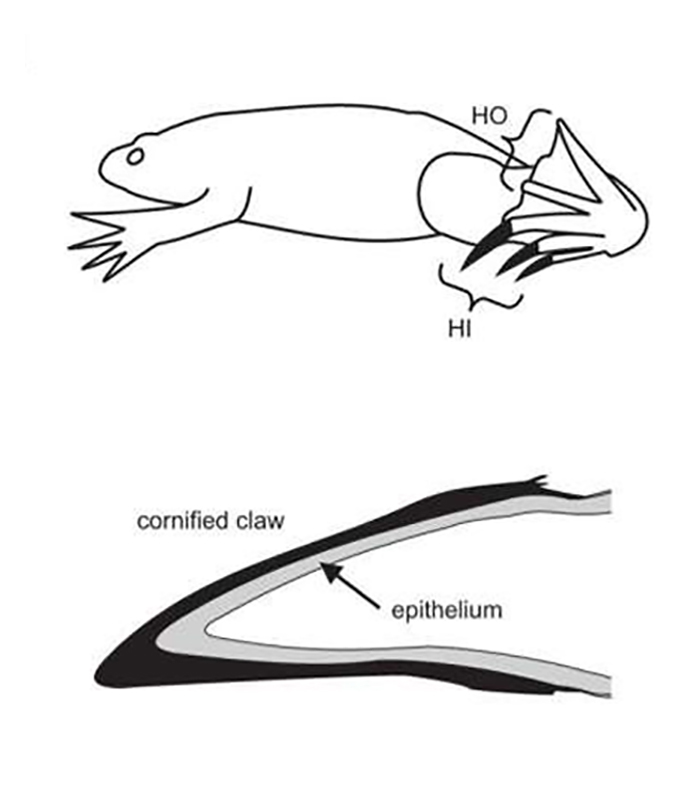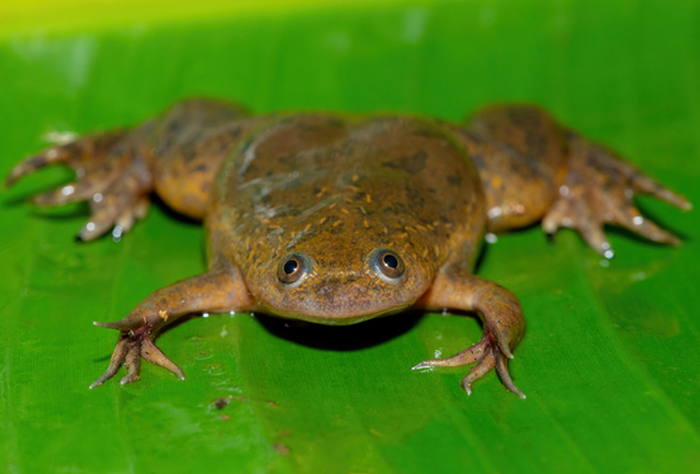
Strange as it might seem for a hairless creature, frogs have provided us with some critical clues on the origins of our luscious locks – a defining mammalian feature whose insulative powers helped us spread across the Earth.
While the amphibians possess nary a single hair themselves, one species does have another bit of anatomy that shares hair’s keratinous components: nails.
So Ghent University molecular biologist Marjolein Carron and colleagues took a close look at the tropical clawed frog (Xenopus tropicalis) to see if our most distantly related nail-bearer could shed any light on mysterious origins of mammalian fuzz.
Despite previous research suggesting claws of frogs and mammals evolved independently, the new work found frogs share some genes involved in the production of similar keratin-like molecules.
“It is known that patients with mutations in the Hoxc13 gene have defects in the growth of hair and nails,” explains Medical University of Vienna dermatologist Leopold Eckhart. “In our study, we were able to block the formation of claws in the clawed frog by switching off this gene.”
This suggests hair’s ‘seeds’ were planted back in the days of the common ancestor of frogs and mammals. This would have been what’s known as a stem tetrapod, one of the first four limbed animals that scurried on land around 375 million years ago.

Hair’s regulatory gene Hoxc13 was present in the last common ancestor of all jawed vertebrate, and persists in many today. That the gene was so well conserved indicates its crucial function. Previous research identifying the gene in modern lobe-finned fish – ‘living fossils’ representing our pre-land ancestors – found it was used to tell their body where to form paired fins. Later in the evolutionary timeline these fins became tetrapod legs.
The researchers suspect hardened skin arose to stop the tips of hard working land-legs from wearing away. Such protective accessories then became a crucial tool for digging, hunting, moving, and self-defense.

“The original function of the primordial ‘hair keratins’ as ‘toe keratins’ is conserved in toe pads of tree frogs, toe tips of the axolotl [and] claws of clawed frogs,” the team writes in their paper.
Later, expression of these keratin-like molecules spread to other parts of the body.
“During the evolution of mammals, the program of claw formation was modified for the development of hair,” says Eckhart.
We don’t yet know how that shift from toes to hair follicles happened, or if Hoxc13 is also involved in control of feather keratins.
“Skin appendages, such as claws, nails and hair are regenerating throughout life to compensate for abrasion and damage caused by the direct contact to the environment. Thus, the cooption of a regulator of development has contributed to the evolution of tissue regeneration in the adult organism,” the team concludes.
This research was published in Nature Communications.










